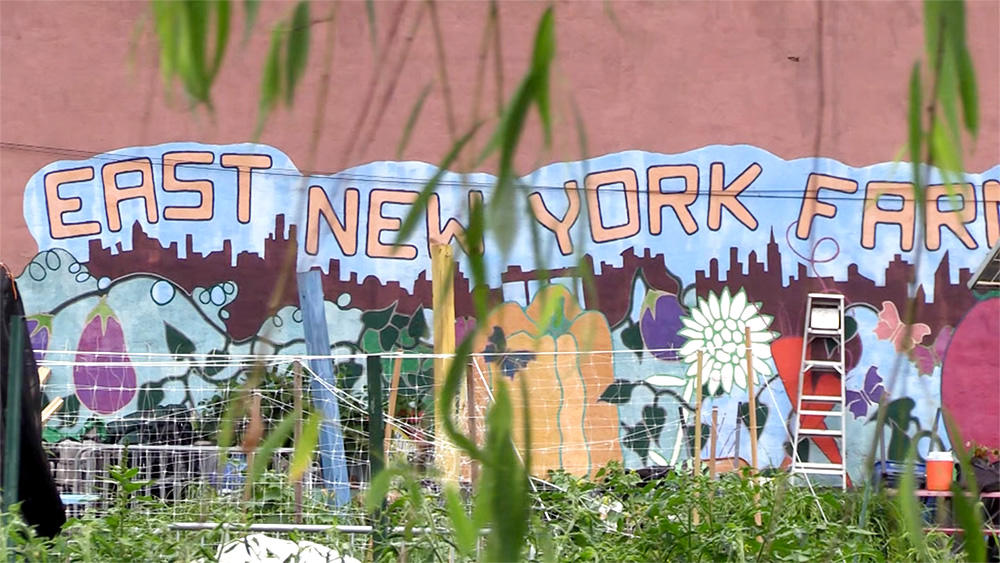“Whenever the subway passes, we yell, ‘Use your farm voice,’” Anita Chan shouts as an elevated train rumbles over a half acre of greenery
in Brooklyn.
Here at the end of the number 3 line, on New Lots Avenue, sunflowers peek out through the wire fence that encloses the community garden of East New York Farms! (ENYF!). On this plot, local residents grow dozens of varieties of produce — Swiss chard, bitter melon, cherry tomatoes, to name a few — and learn about organic farming.
When the train noise subsides, Chan, an ENYF! staff member, picks tomatoes off a vine and hands them to the five college students clustered around her. These students are in a six-week, six-credit Columbia course called SEE-U NYC — Summer Ecosystem Experiences for Undergraduates — led by conservation ecologist Amanda Caudill ’03SEAS. The program, organized by the Earth Institute Center for Environmental Sustainability (EICES), brings the farm-to-table journey to life with lectures, labs, and weekly field trips to urban and rural farms around the tri-state area.
Interns from local middle schools push blue wheelbarrows filled with soil as the college students ask Chan questions.
“How many kids help harvest vegetables?”
“What’s the soil composition?”
Last week, students explored a greenhouse perched on the roof of a Whole Foods in Gowanus. Next week, they will head upstate to a Buddhist monastery that grows its own organic food. The week after, they’ll visit Rise and Root Farm, a cooperative in Chester, New York, run by urban-farming activist Karen Washington. Washington’s talk on “food apartheid” has made three students cry, says EICES assistant director Kelsey Wooddell ’18SIPA. According to the US government, twenty-three million Americans, including 6.5 million children, live in so-called “food deserts,” where fresh produce is scarce. Washington prefers the term “food apartheid,” Wooddell says, “because a desert is naturally occurring and apartheid is not.”
“We want students to get their hands dirty,” Caudill says. “We want them to see the many ways to farm sustainably and talk to the people who are doing this work.”
Caudill believes agroecology — agriculture that works in harmony with the ecosystem to improve both — has implications for everyone.
“We all eat. We all make decisions about food every day, and those decisions influence our food systems. And food systems influence our decisions,” says Caudill.
At the garden, students measure the temperature of the soil and the surrounding sidewalk. Cities are often hotter than rural areas, because asphalt absorbs heat. But green spaces can help cool cities down, an effect students are tracking in their lab.
Alongside the lab work, each student develops an individual research project. Shaul Armony, a junior at the School of General Studies, is focusing on access to nutritious food. He was a cook before coming to Columbia and now majors in sustainable development.
“If you’re at a grocery store, it’s hard to understand where your food comes from,” says Armony. “That tomato we just ate was so great because it was right off the vine. So if a kid goes home and asks his parents for more tomatoes like that — fresh from a farm, in season — then change can start to happen.”
For Wooddell, change can also start with programs like this one.
“Maybe these undergraduates will be our future activists, researchers, or policymakers helping with sustainability and food inequality,” says Wooddell. “You can’t improve things without education. You just can’t.”
This article appears in the Fall 2019 print edition of Columbia Magazine with the title "A Vine Grows in Brooklyn."



